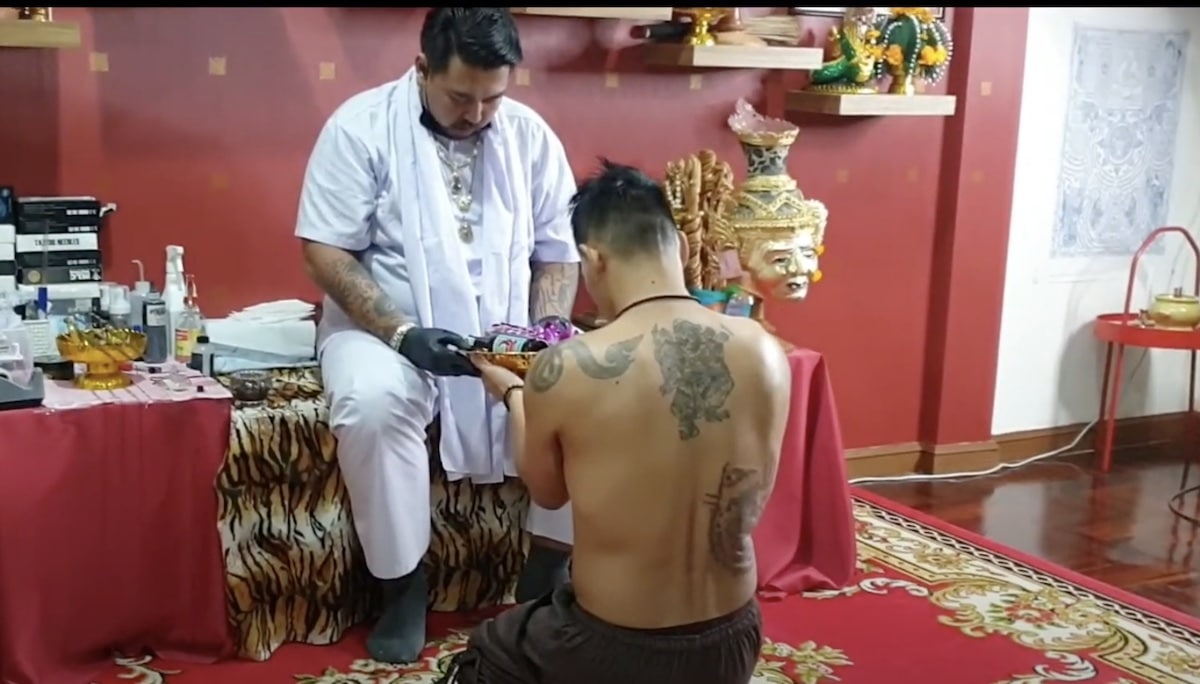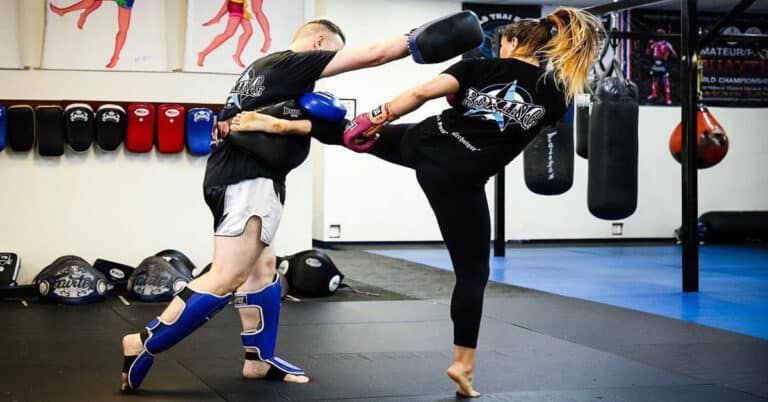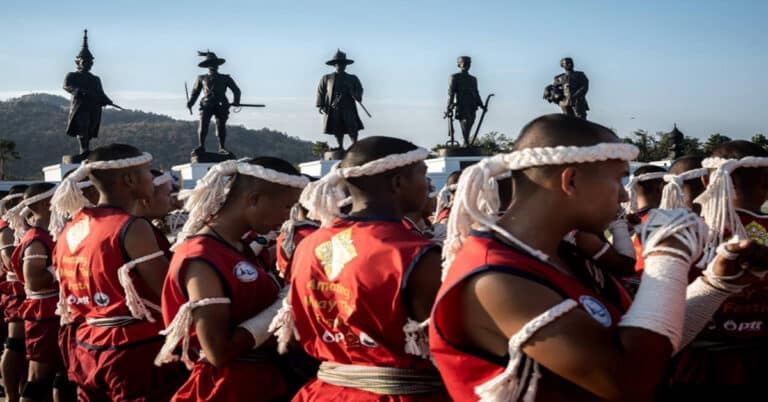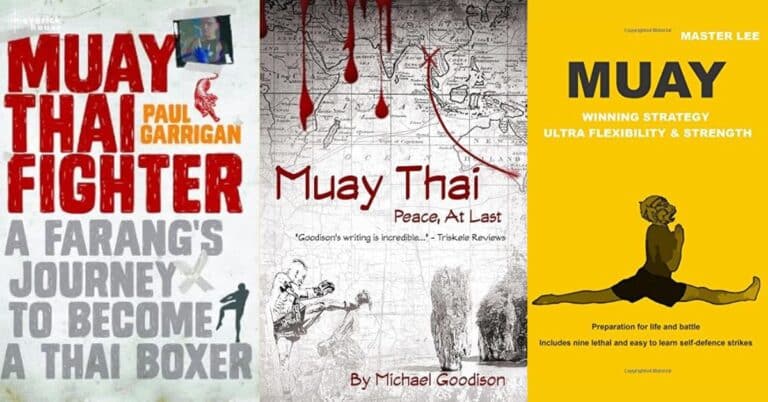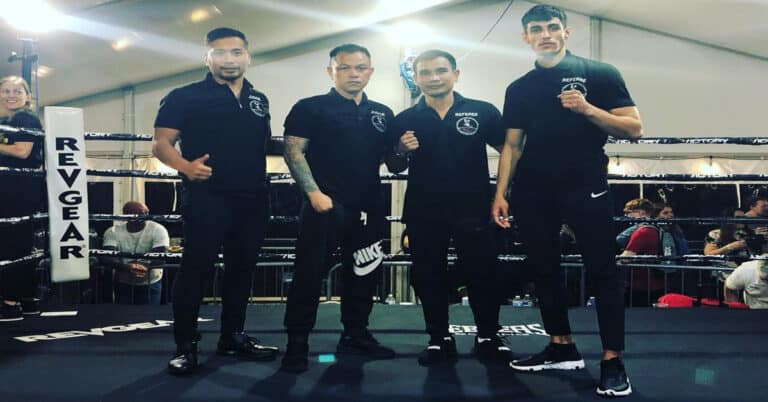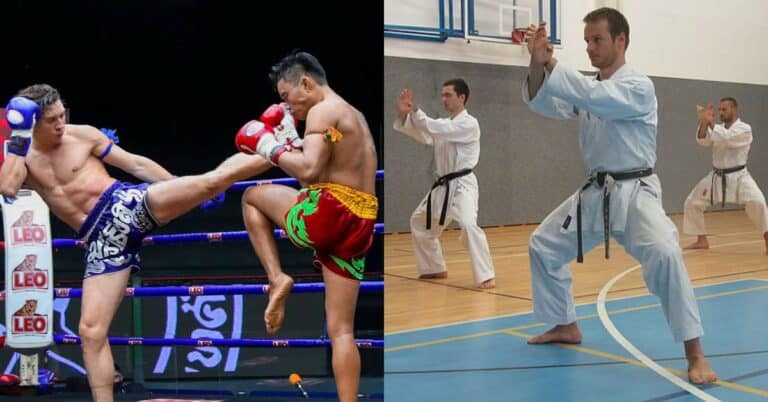Muay Thai Tattoos: Sak Yant
A common sight in the arenas of Bangkok, Thailand is the tattoo-adorned bodies of veteran Thai boxers. These Muay Thai combatants lean into their identity taking great pride in the title of “Nak Muay” Part of this identity is the belief not only in themselves but in the mysticism that is heavily engrained in the Thai culture, this often takes form in the pre-fight rituals leaving offerings to Buddha at shrines across the country, having monks bless their training facilities and Mongkon, but also in the form of the traditional bamboo Muay Thai tattoos.
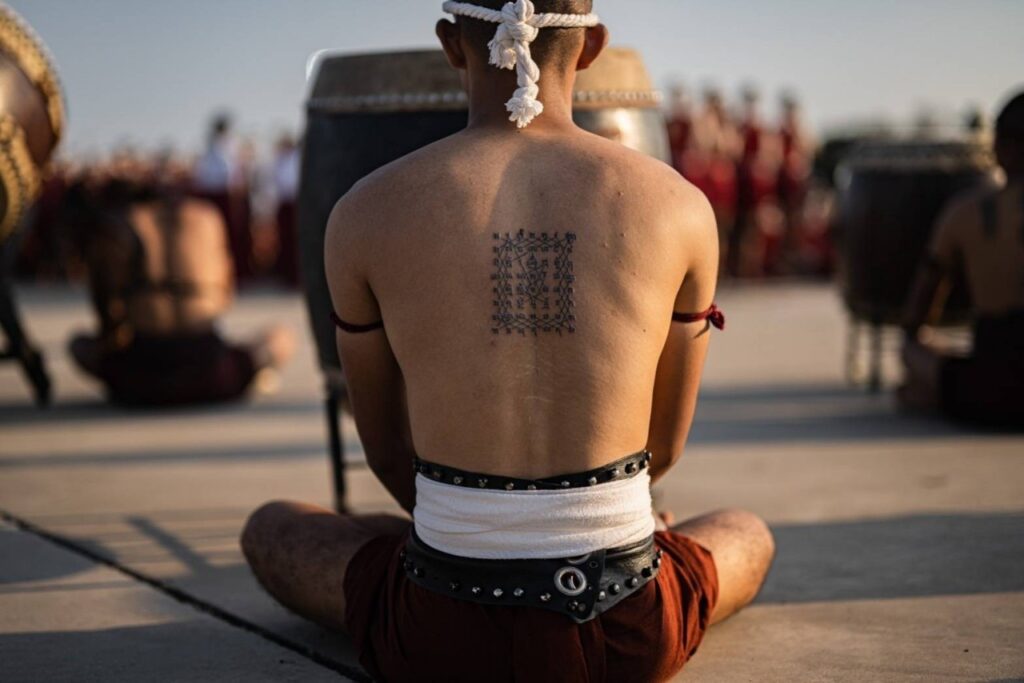
What Is a Sak Yant?
Called a Sak Yant, Sak means tattoo and Yant is the Thai pronunciation for the word Yantra, which is a diagram with religious connotations used in meditation and are used by Nak Muay as Muay Thai tattoos.
These traditional tattoos are not only a beautiful decoration but hold a powerful symbolism in the Thai community, born through mystical Thai Buddhism, known as Tantric Theravada, which type of Buddhism that intertwines magical and ritualistic practices in order to progress towards Buddhist enlightenment. The practice of Tantric Theravada makes use of sacred language and mantras, Protective magic linked to luck, longevity, strength, courage, and more.
The use of Bamboo tattoos, specifically Sak Yants are said to date as far back as 2000 years ago, however, the first confirmed usage is only recorded in the 1600’s, when warriors in Thailand (called Siam at the time) would get Sak Yants as a form of protection when heading into battle.
There are a huge amount of different Sak Yant variations the popularity of the which, while initially rooted in Thailand has spread through south-east Asia as far south as Indonesia and the Philippines, with Sak Yants being not uncommon in neighboring countries of Laos, Cambodia and Myanmar. This popularity has surged in the last 20 years with many foreign combat sports athletes sporting the Mystical tattoos from famous Australian Thai boxer John Wayne Parr to UFC Heavyweight Cyril Gane.
Types of Sak Yant – Muay Thai Tattoos
As mentioned before there are countless variations of Sak Yant, the majority of all Sak Yants will consist of three key components; The Yantra, The Pali Text and the Associated Mantra. Listed below are the most common to be seen among Muay Thai tattoos on fighters::
Hah Taew (5 Sacred Lines)
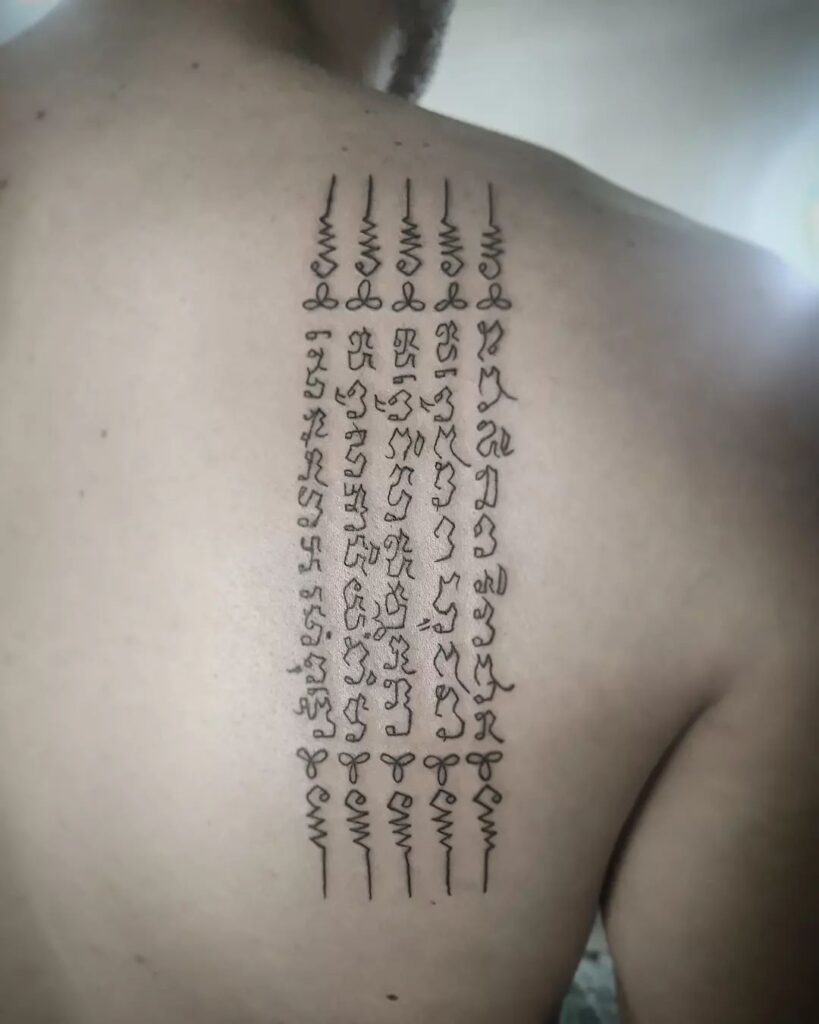
The Taew, possibly the most common Sak Yant, can be found tattooed across the globe from foreign Muay Thai fighters to celebrities and people who have traveled through Thailand.
Each of the 5 lines carries a specific meaning each line supposedly casting a spell on the owner. The first line wards off evil spirits, the second prevents bad luck, the third provides protection from dark magic and curses, the fourth brings good luck and positive energy, and the fifth grants improved charisma.
Yant Suea
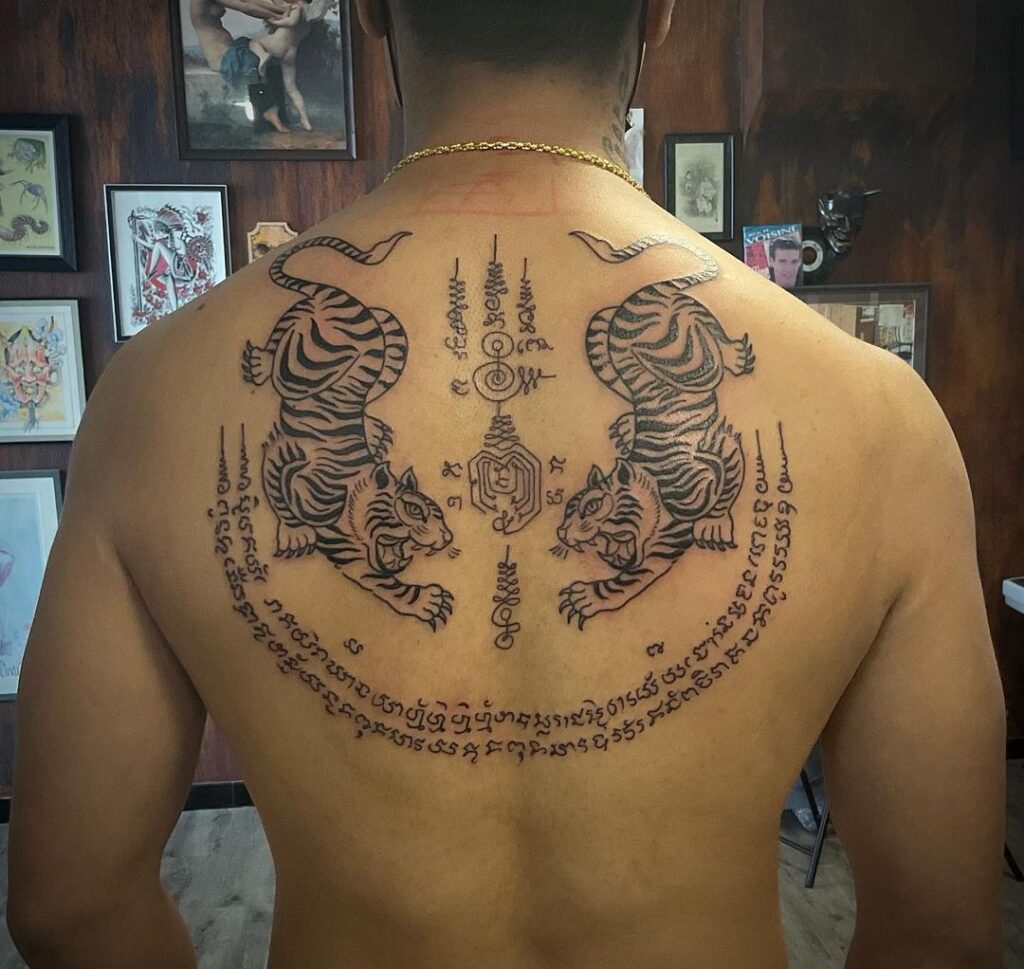
Perhaps the most common among Muay Thai fighters is the Tiger Sak Yant called the Yant Suea, The tattoo itself is surrounded by myth, believed to ignite a fire within the owner. A symbol of strength, power, protection, conviction, and authority. A common tattoo for Thai people who have a dangerous occupation, as well as many Muay Thai fighters, with the Twin Tigers offering the highest level of power of any of the other Sak Yant tattoos.
Gao Yord (9 Peaks)
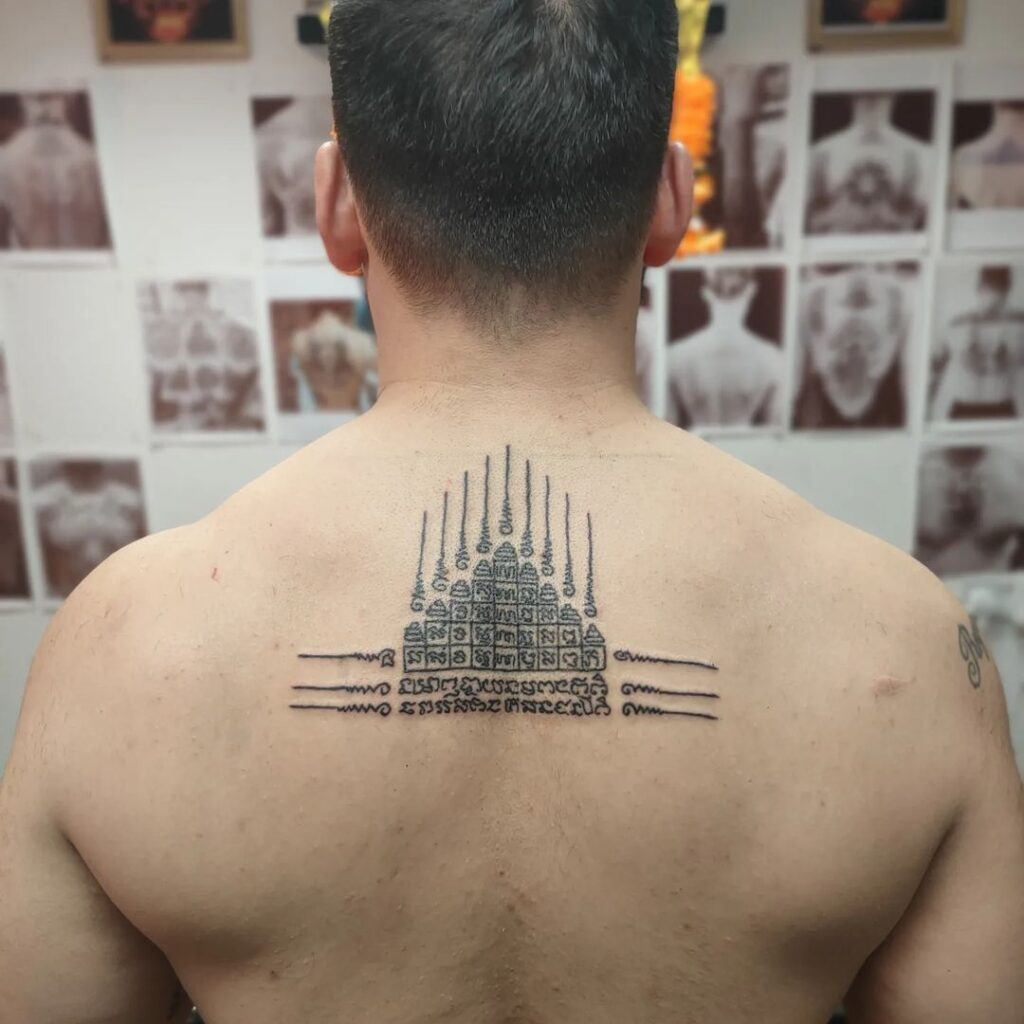
Buddhism attaches high importance to the number nine, with three being a sacred number and nine being three, threes. The Basic Design represents the 9 peaks of Mount Meru, the home of the gods. The three ovals on each peak represent Buddha. This grouping of triple ovals can be seen in a multitude of other Sak Yants, The script of the Gao Yord includes Khom an ancient Khmer script. In the center of the peaks Is the “magic” box which is made up of a number of small squares with some not showing the boxes themselves only the script.
Each box contains a Khom symbol, each giving a protective spell to the owner ranging from Kong Kra Phan which provides magical invincibility to Pong Gan Antarai which provides protection from violence, accidents and natural disasters, the Gao Yord is very popular amongst Muay Thai fighters often tattooed across the upper back with the top peak extending to the base of the neck.
Paed Tidt (8 Directional Yant)
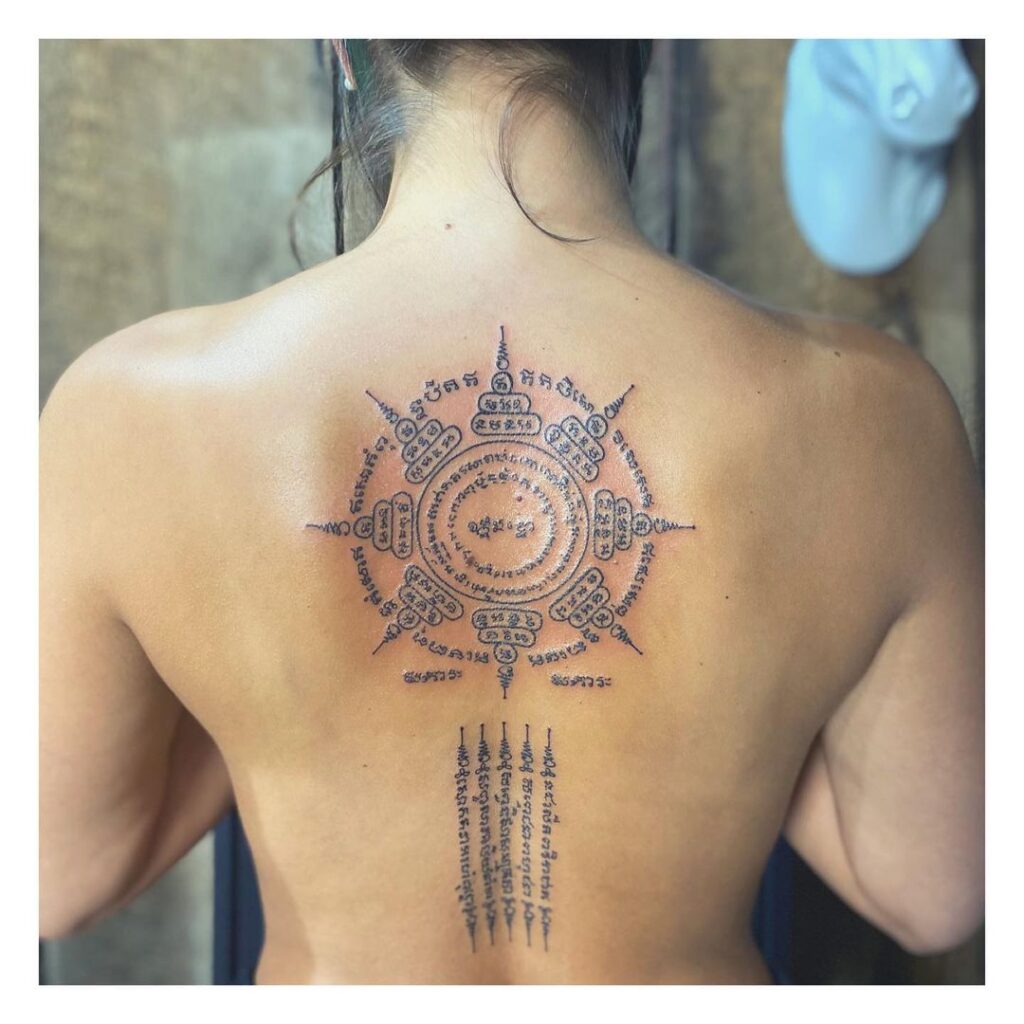
The Paed Tidt or “eight directions”, is a Yant of geometric design, in a circle with eight mantras and eight triple oval Buddha designs. This is symbolic of the eight representations of Buddha with one for each day and two on Wednesday. These eight representations of Buddha can be found in Buddhist temples across the globe. The Paed Tidt, is said in part due to its circular nature to provide protection when traveling in any direction and to ward off evil spirits.
Prachao Ha Praong
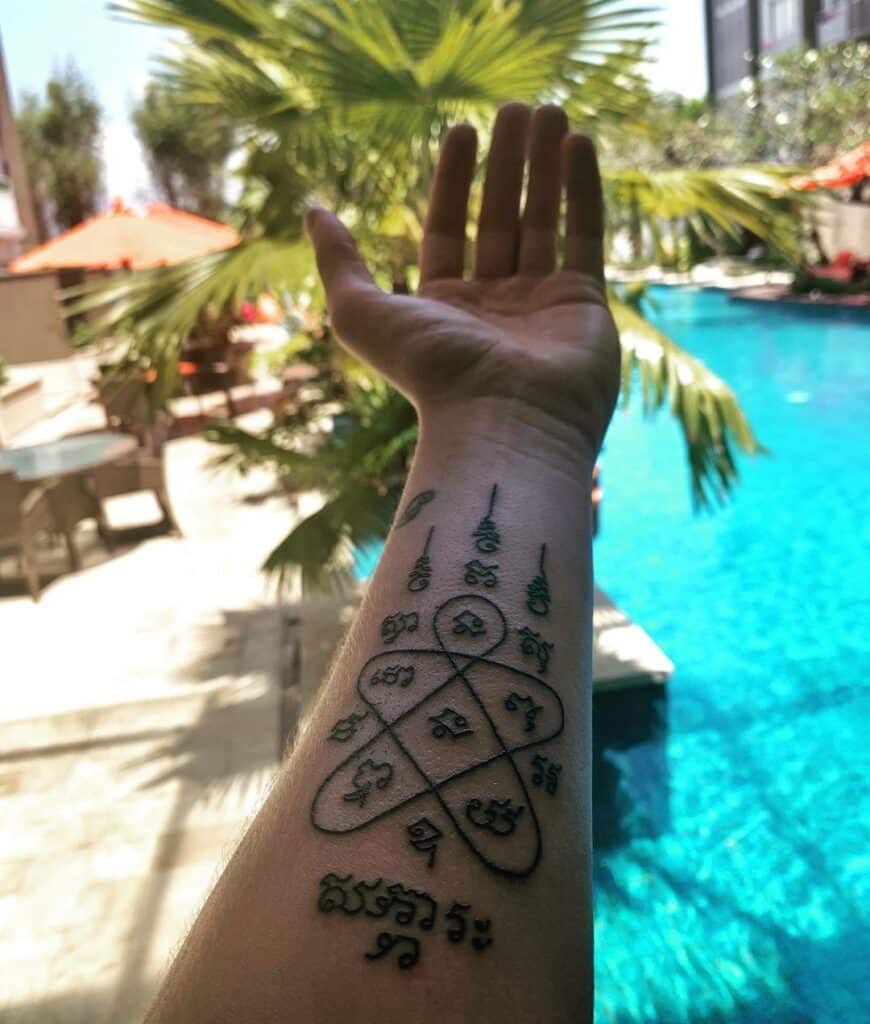
Prachao Ha Praong, translates to the “five blessings of Buddha” The least known of the five Sak Yants in this article, however, this Sak Yant is deemed one of the most fundamental and meaningful of the Sak Yants. The design itself can be found in Buddhist temples, literature and tattooed on monks throughout Thailand. Having this design tattooed onto you brings good luck, Happiness, protection from any evil spirits, and improved general well-being.
Process of Getting a Sak Yant
Traditionally the fighter would approach the monk who is to conduct the tattooing process, the monk will read the fighter’s aura and decide on what tattoo and location are best suited for them, however, this tradition is becoming less and less practiced with people choosing their own design and location, with monks deeming that if the person already knows the design and location that they want then Buddha has already decided.
These tattoos are created using an ancient tradition of using a fine needle firmly attached to a thin piece of bamboo and secured with fine cotton. The needle is dipped into ink and gently tapped into the skin to draw the design. Unlike conventional tattoos where a tattoo gun is used, the thin needle does not tear the skin only small punctures are made so there is significantly less bleeding and the tattoo will have little if any scabbing, which significantly speeds up the healing process.
Once the Tattoo has been completed it is blessed by a monk, however, in current times with many people getting tattoos in modern tattoo studio, Sak Yants can be blessed after the fact, that with an offering to a temple the monks will perform the blessing ritual.
Rules of Conduct after getting a Sak Yant Tattoo
As with anything that involves the teachings of Buddha or his imagery, following the application and blessing of a Sak Yant it is accepted that there will be a number of rules that the bearer will adhere to moving forward, these are: Do not kill, do not steal, do not desire another person’s partner or be unfaithful to your own, do not lie, do not get Intoxicated, do not insult your mother.
These Sak Yant tattoo rules are to be taken with a pinch of salt with the most important ones not differing too much from the accepted morals of the western world and can be easy enough to follow, however, it is important when looking to get a Sak Yant of the cultural implications that come along with it.

